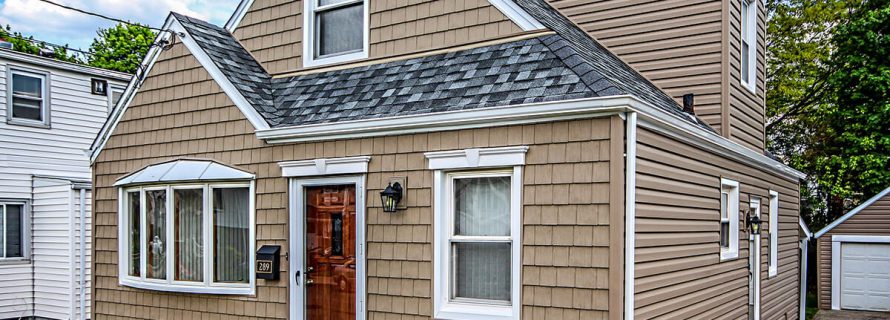Why it Pays to Have Your Vinyl Siding Professionally Installed

When considering installing vinyl siding on your own, there are many factors one needs to consider according to Chris LoCascio of Alure Home Improvements.
One of the inherent difficulties to installing vinyl siding is that vinyl can expand or contract a half an inch or more over the course of a normal year, accounting for regular changes in the temperature. This expansion and contraction is entirely normal, but it also speaks to the expertise needed to install vinyl siding correctly. Failure to account for these sorts of variables can have a disastrous impact on your siding, void manufacturers’ warranties, and even put your home at risk for mold, mildew, infestation, and other similar factors.
Adjacent siding panels need to be locked along the length of the bottom of the panels, but it is essential that the panels are not stretched. You only want the lock to be engaged and fastened. Here are just a few of the things that need to be accounted for by a siding professional when they install vinyl siding on your home:
- All panels and accessories, when installed correctly, should be allowed to move freely from side to side.
- There should always be a minimum of a quarter inch of clearance at all openings and stops, and in temperature below 40 degrees Fahrenheit, the clearance needs to be increased even more.
- The spacing between fasteners varies depending on the specific type of siding and various windload testing.
- The nail should always be placed in the center of a nail slot for maximum stability. You might be tempted just to make sure the nail fits, but if it isn’t perfectly centered you could have problems down the road.
- The staples, nails, and other fasteners used when installing vinyl siding make a big difference. For example, using the wrong kind of nail in the siding can cause your vinyl to ripple dramatically and have a long lasting impact on the exterior of your home.
- The walls of the home need to be prepared before the siding is installed. Unless you already have one in place, adding a water-resistive barrier is extremely important because it helps prevent mold and mildew.
LoCascio adds, “While vinyl siding in itself may not be very difficult to install, the tricky part is all the accessories. Installing the J channel around all windows and doors takes skill. Another thing to keep in mind is if not properly installed to manufactures specifications, your warranty will be void. Don’t forget that once you get up higher on the house, it can get dangerous.”
This list is meant merely to illustrate the various contributing factors that go into installing vinyl siding on homes that are in similar climates to Long Island and the tri-state area. For additional information, speak with the specialists at Alure Home Improvements.
- Additions and New Construction
- All Exteriors
- Alterations
- Basements
- Bathrooms
- Customer Service
- Customer Stories
- Decks
- Design & Planning Show
- DIY
- Doors
- Educational Resources
- Extreme Makeover Home Edition
- Fashion Show
- General Remodeling
- Green Living
- Handyman Home Services
- Home Decor
- Home Entertainment
- Home Improvement
- Home Improvements
- How to Tips
- In The Community
- Kitchens
- Off-the-Wall Remodeling Stories
- Remodeling
- Resources
- Roofing
- Siding
- Social Media
- Sunrooms
- Tips & Tricks
- Trends
- Windows

